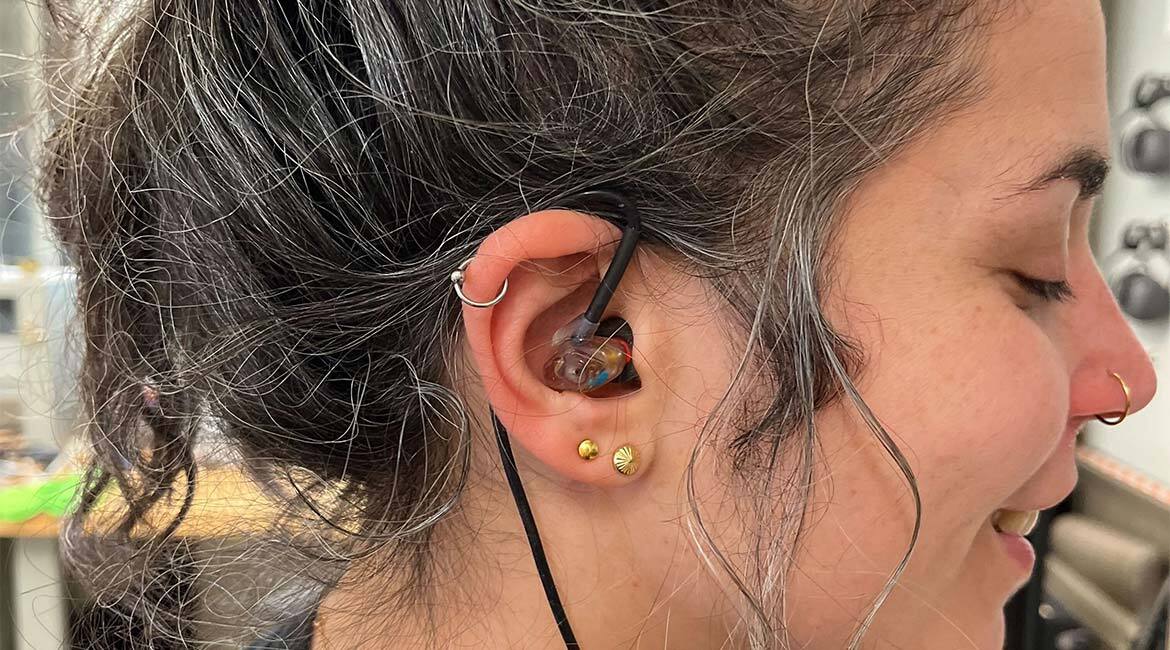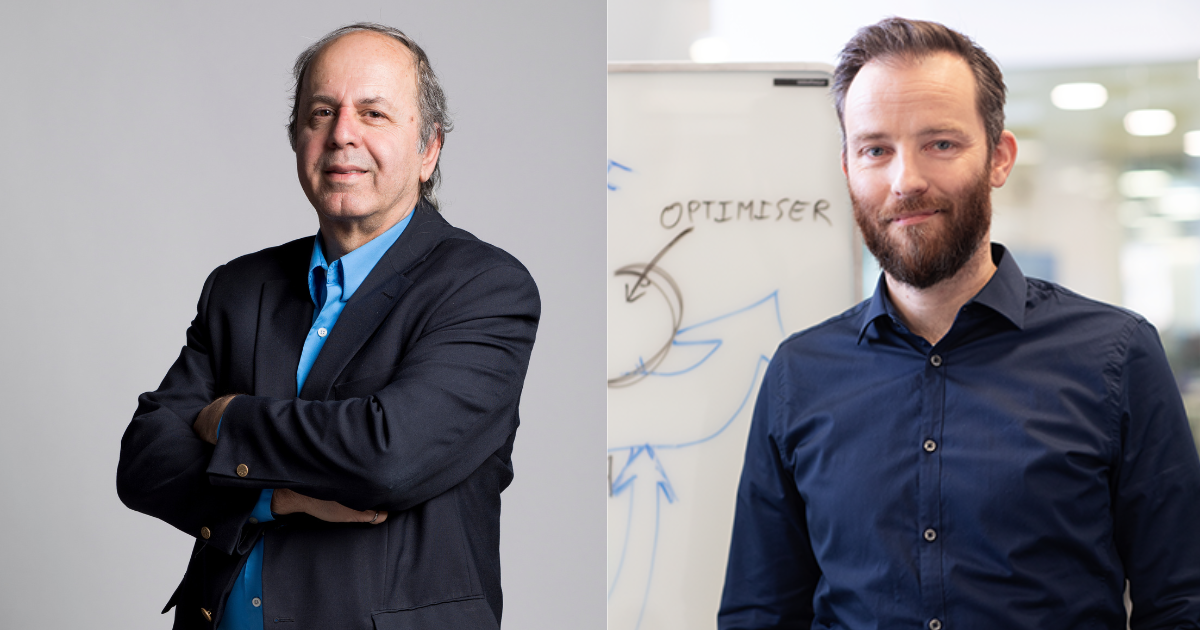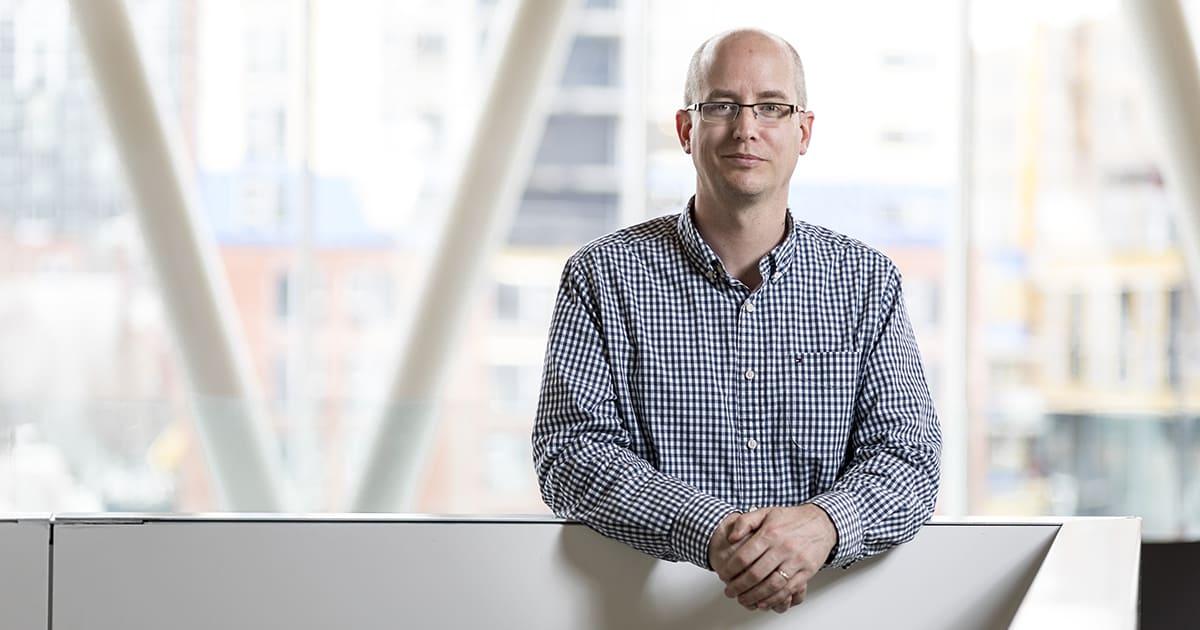
Neurodegenerative diseases such as Parkinson’s and Alzheimer’s could be treated earlier, by listening for subtle symptoms that appear years before diagnosis. Rachel Bouserhal, Professor in the ÉTS Department of Electrical Engineering, hopes to achieve this with an earpiece capable of detecting irregular physiological signals generated in the body.
Parkinson’s disease is often diagnosed when signs are visible, such as tremors, muscle rigidity or slowing movement. However, much more subtle symptoms may have gone unnoticed years before. “These can be changes in the way a person articulates words, in the lexicon used, even in breathing and swallowing habits,” points out Rachel Bouserhal.
Alzheimer’s patients, for example, will progressively use a less extensive vocabulary or repeat the same words. Others, suffering from Parkinson’s disease, will have shallow breathing, with shorter inspirations. “We can already capture these physiological signals with in-ear devices, but can we use them to detect certain diseases at an early stage?” asks Rachel Bouserhal. That is the question for the professor, who is aiming to answer it with her reserach team at ÉTS.

To achieve this, she uses a device developed in partnership with Montreal-based EERS Global Technologies and the ÉTS-EERS Industrial Research Chair in In-Ear Technologies (CRITIAS). The device is inserted into the ear like conventional earphones. An in-ear microphone picks up sound variations coming from signals such as speech, breathing, and heartbeats.
“When blocking the ear canal, sounds produced by the body are amplified in the low frequencies, as they can no longer escape into the air,” explains the researcher. At the same time, a second microphone picks up external noise and sends it back into the ear via a miniature loudspeaker. This reduces discomfort created by the “occlusion effect.”
Separating the Signals
Testing of the professor’s hearing monitor is currently at the “proof of concept” stage. One objective is to successfully isolate the different signals, which are all recorded at the same time. This is made possible based on source separation algorithms—using multiple microphones—and with machine learning, a form of artificial intelligence. “We’re also interested in other types of sensors, such as photoplethysmography (PPG), which can detect heartbeats,” says Rachel Bouserhal.
Next, we must be able to compare data between people with and without disease. Two separate studies are currently being carried out by the team, one with Parkinson Québec and Université de Montréal, involving a sample of Parkinson’s patients and their caregivers. The other, in partnership with the Douglas Research Centre, is collecting data from healthy people and those suffering from Alzheimer’s disease and mild cognitive impairment.
The researcher believes that future generations will wear in-ear devices the majority of the time, making it possible to track health indicators and even a person’s emotions. “It won’t be too hard to convince the next generation to wear in-ear devices all the time,” she says. “They’re already doing it, using AirPods, for example.”
Advanced Technology
Originally from Lebanon, Rachel Bouserhal settled with her family in the United States, where she earned a master’s degree in electrical engineering from Michigan State University. She came to Montréal to join the École de technologie supérieure, which was looking for a PhD student specializing in signal processing. Under the supervision of Jérémie Voix, professor in the ÉTS Mechanical Engineering Department, her PhD deals with communication in noisy environments.
In this context, the researcher helped develop an earpiece which enables people working in high noise level areas to talk to each other without removing their hearing protection. Noise is filtered by the device using an algorithm, to make dialogue more intelligible. This invention laid the groundwork for her current research as a professor. “I realized that we could use this same technology for the early detection of disease,” she says.

The professor chose to stay at ÉTS for its opportunities in applied research. “I definitely wanted my work to result in a product that people could use. ÉTS also has many of the resources I need, such as an audiometric booth, which is not easy to find at other universities.” Audiometric booths can be used to measure the effectiveness of hearing protectors under excessive noise conditions.
In the medium term, Rachel Bouserhal figures that her device will easily detect whether a person is already ill. As for early diagnosis, she hopes this will be possible within the next ten years.



